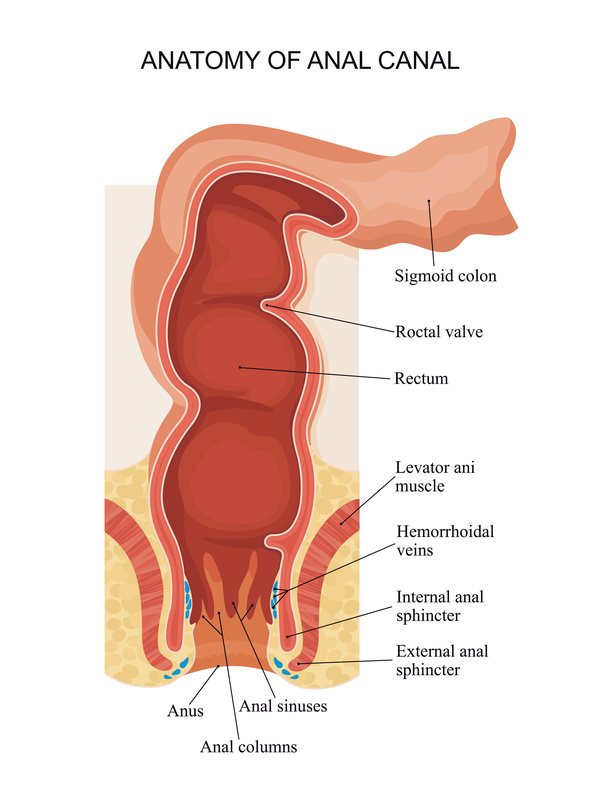With the term hemorrhoids we commonly refer to the disorder already in progress. But Where does hemorrhoids come from? In fact, hemorrhoids are an anatomical structure that is physiologically present in our body. It may happen that, due to the particular conformation of the final part of the intestine, incorrect lifestyles or a genetic predisposition, they are subject to incurring swelling and inflammation. At that point there is the onset of the annoying haemorrhoidal disease.
Knowing the anatomy, function and normal behavior of hemorrhoids allows us to face the problem with more awareness. Often, in fact, the medical examination is delayed only out of embarrassment. Instead, it is important to have the problem assessed as soon as possible by a professional, who can direct the patient towards the best treatment based on his specific case.
Where does hemorrhoids come from?
The term hemorrhoids derives from the Greek and is formed by the two words hâima “blood” and rhéō “to flow, to flow”. Hemorrhoids are vascular structures that are always present in the anal canal. Therefore, even people in perfect health have hemorrhoids. Their function is very important and under normal conditions not only do they not bother us, but we are absolutely unaware of their presence.
Hemorrhoids are nodular structures, particularly sensitive to touch, which are red-purple in color. This particular color is due to the fact that they are formed by a spongy tissue rich in veins and capillaries.
They are held firmly to the inner wall of the anal canal through a series of fibrous ligaments. Depending on the location, they are referred to as internal and external hemorrhoids. Internal hemorrhoids are those that remain inside the anal canal, thus resulting completely invisible.
On the other hand, they are said to be external, when they are positioned so as to protrude from the anal opening, and can therefore be seen with the naked eye.
When they become pathological, hemorrhoids are divided into 4 degrees of severity:
- 1st degree: Hemorrhoids remain completely internal. The only symptom they give is bleeding and a possible feeling of fullness and discomfort;
- 2nd degree: Hemorrhoids prolapse on the outside, but only during intense efforts, such as during evacuation. They return spontaneously once the effort is stopped. They can cause bleeding, itching and discharge of secretions from the anus;
- 3rd degree: In this case the prolapse falls back but only manually. They can lead to mild fecal incontinence;
- 4th degree: Prolapse is not resolved even manually. The pain can also be very intense. The only remedy is surgery.
- what hemorrhoids are

What is their function?
Not everyone knows that hemorrhoids have an important physiological function. Together with the anal sphincter, they are responsible for controlling both evacuation and continence. Being so richly vascularized and full of blood, in fact, they have the ability to swell and deflate when needed.
Normally, in resting conditions, hemorrhoids appear more swollen, filling with blood. In this way they contribute to closing the anus (they constitute up to 15-20% of anal pressure), retaining both stool and gas inside. On the contrary, during the evacuation they relax, favoring the emptying of the anal canal.
Hemorrhoids start to cause discomfort when they experience swelling and inflammation. The anal wall is made up of very loose tissue, which tends to yield easily, causing the hemorrhoids to dilate. It follows the start of an inflammatory process, which involves all those annoying consequences that anyone who has suffered from hemorrhoids at least once in their life knows well.
To become particularly annoying, it is mainly external hemorrhoids. This is due to the difference in the fabric they are placed on. Internal hemorrhoids are located above the pectinated line, where the rectal mucosa is much less sensitive. External hemorrhoids, on the other hand, are found on the anal mucosa, which is much more sensitive to pain.
When inflamed, hemorrhoids can cause prolapse, bruising, or blood clots, or thrombi. Even intense bleeding can occur, in drops or sprays during evacuation. The patient experiences various symptoms of varying intensity, such as a feeling of discomfort, itching, burning and pain.
Loss of mucus from the anus is also possible. Bleeding from hemorrhoids is always bright red in color. This is an important factor to keep in mind, as the presence of coagulated blood can indicate the presence of much more serious pathologies. It is always good, therefore, to consult your doctor immediately in case you notice any irregularities.

Hemorrhoids create embarrassment: but how many suffer from it?
Knowing with certainty the incidence given by haemorrhoid disorders among the population is not easy, because even today a certain embarrassment is hidden behind this pathology. Hemorrhoidal disease is in fact linked to the anus, a part of the body considered private and personal.
It is a disorder that not everyone wants to talk about, but by investigating a little, even among friends and acquaintances, it is clear that it is much more widespread than one thinks.
At least 10% of the world population would suffer from it, and some research has shown that about 50% of people have been affected at least once in their life. The incidence is highest in developed countries, without there being a real discrepancy between men and women.
Women can suffer from hemorrhoids, in particular, during pregnancy or shortly after giving birth. Both hormonal changes and the increase in pelvic pressure can favor the onset of the problem, which however tends to disappear spontaneously after a few months.
Among other triggers, an incorrect lifestyle is the one that affects the most, related to continued constipation, alcohol consumption and aging.






